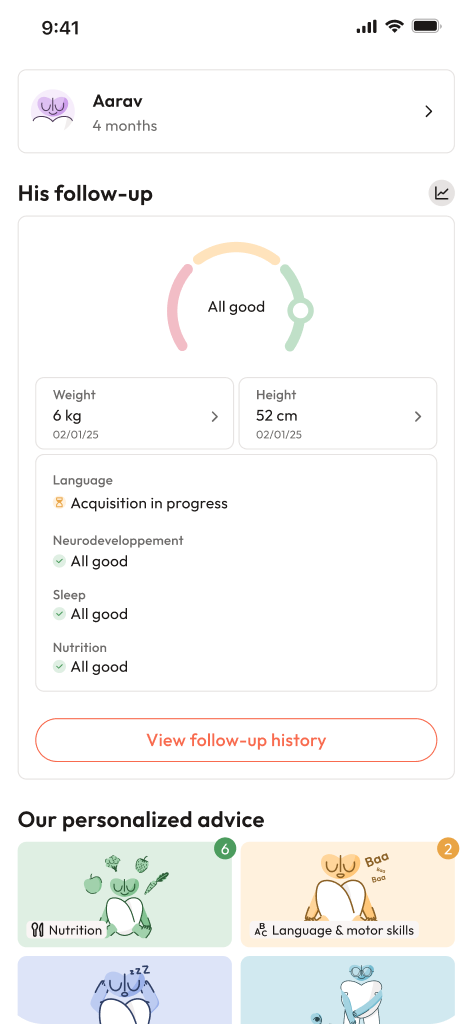A sudden spell of fatigue weighing you down—muscles aching, temperature creeping up, throat burning and swallowing gets tricky. You wonder if these are usual pregnancy woes or something deeper playing its part. Sometimes, the body stirs up mysteries just when you least expect it—like mononucleosis during pregnancy. While your immune system is delicately adjusted to protect both you and your little one, new viral visitors like the Epstein-Barr virus (EBV) can trigger a flurry of questions. Should you worry about the baby? What about fever or a sore throat that refuses to go away? Let’s unravel the science, sift through myths and facts, and chart out practical ways to care—because understanding brings comfort and helps you find steady ground when unexpected symptoms show up.
Understanding mononucleosis during pregnancy
Mononucleosis during pregnancy—an illness sometimes cloak-and-dagger in its early days—stems most often from the Epstein-Barr virus. This member of the herpesvirus family plants itself quietly after first exposure, lurking quietly in lymphoid tissues, sometimes for a lifetime. Reactivation isn’t common but can be nudged by shifts in immunity, such as those during pregnancy.
Transmission? Classic: saliva—think sharing cups, cutlery, or that innocent peck on the cheek. Yet it doesn’t stop there; close contact, a brief cough, even blood can be culprits. You might notice it first as profound exhaustion—sleep fails to restore energy. Fever rises above 38°C (100.4°F), the throat rebels, sometimes so inflamed it mimics tonsillitis. Swollen lymph nodes under the jaw or neck become tender sentinels, and muscle aches slip in almost unnoticed at first.
Here’s what makes mononucleosis during pregnancy a puzzle: these signals mingle so neatly with typical pregnancy complaints or common flus. The immune system, always recalibrating, encourages the virus to occasionally break its silence, but active EBV infection is rare in expectant mothers—affecting perhaps 0.05–1.5% of pregnancies. Most adults have met EBV before, sailing through unscathed, yet pregnancy tips the balance just enough to make vigilance wise.
Why does mononucleosis during pregnancy worry parents?
There’s a natural urge: shield the baby from everything. Yet, vertical transmission (when a virus crosses the placenta) is almost nonexistent with EBV. The major worry? The mother’s own health. Symptoms overlapping with conditions like preeclampsia—headache, fatigue, high blood pressure, heightened liver enzymes—can mislead even experienced clinicians. Add to that the extra tiredness or muscle pain which pregnancy already brings, and the stress can amplify tenfold.
Concerns swirl around complications like splenomegaly (enlarged spleen)—rare, but risky if unnoticed. A swift movement or an accidental bump, and a ruptured spleen becomes an emergency. Less common but medically weighty stories involve serious illnesses like secondary hemophagocytic lymphohistiocytosis (sHLH) or liver involvement, all highlighting the delicate balance needed when caring for both mother and fetus.
Major symptoms and warning signs of mononucleosis during pregnancy
Let’s get specific. Signals to watch for include:
- Deep, unrelenting fatigue—it clings despite long naps or early nights.
- Persistent fever, often with chills tagging along.
- Sore, irritated throat, tonsils red or swollen, sometimes sporting white patches.
- Swollen lymph nodes—particularly in the neck or under the jaw.
- Muscle pain, headaches, loss of appetite, even nausea at the thought of food.
A combination—especially fatigue with hard, swollen glands or fever that ignores acetaminophen—should lead you to your healthcare provider. Are there red flags needing immediate action? Absolutely. Watch for:
- Sharp pain in the upper left abdomen (pointing toward the spleen), which could spell ruptured spleen.
- Confusion, loss of consciousness, or seizures.
- Difficulty breathing or swallowing, persistent high fever, or a relentless decline despite care.
Paying close attention to these details means you’re already one step ahead in keeping both you and your baby safe.
How is mononucleosis during pregnancy diagnosed?
The pathway to clarity starts with a good clinical eye. Doctors look for the triangle: fever, lymph node swelling, and marked fatigue. But blood tests add the real substance:
- White blood cell (lymphocyte) count—often climbs high during infection.
- EBV-specific antibodies—detect current or past encounters with the virus.
- Liver function markers, and occasionally, a quick ultrasound to rule out splenomegaly.
Misleading symptoms may suggest other culprits: viral hepatitis, cytomegalovirus (CMV), HIV, or preeclampsia. Sorting through this clinical maze, each test zeroes in on the actual origin, making targeted, supportive management possible.
Special risk factors and incidence during pregnancy
Fortunately, encountering a primary EBV infection while pregnant is quite rare, and the mononucleosis during pregnancy landscape stays calm for most. But what tips the scale toward illness? Suppressed immunity—a natural adjustment to avoid fetal rejection—can reboot dormant EBV. Emotional stress, depression, or ongoing family upheaval may quietly influence susceptibility, leaving the door open just wide enough for the virus to speak up.
Maternal risks and possible complications
Usually, mononucleosis during pregnancy takes the gentle road and symptoms resolve quietly with rest and supportive care. Occasionally, the illness takes a sharp turn—splenomegaly, for instance, raises the risk of rupture (imagine sudden, severe pain below the ribs, maybe dizziness or fainting). Other serious, though very rare, complications might shadow the course: severe liver inflammation, secondary immune reactions, or acute kidney trouble. Sometimes, routine lab results even mimic pregnancy complications like preeclampsia, setting the stage for mistaken early intervention—one more reason for careful, thorough diagnostics.
Effect on the baby and pregnancy outcomes
A reassurance: mononucleosis during pregnancy almost never harms the baby directly. Direct transmission to the fetus remains a rarity, and long-term concerns about birth defects do not stand up under scientific scrutiny. The real attention falls on maternal fever—sustained high temperatures can, if left untreated, nudge risks of miscarriage or early labour higher. Some research points to minor links with fetal growth restriction or shorter pregnancies, but the evidence simply isn’t firm. Most often, expectant mothers with mono welcome healthy, term babies, and the story ends on a hopeful note.
Practical management and care strategies
Daily life becomes a careful balancing act. Treating mononucleosis during pregnancy centres on comfort and vigilance:
- Deep rest—listen closely to your body’s signals.
- Fluid intake—keep hydration steady.
- Use acetaminophen (paracetamol) at safe dosages for fever or pain.
- Antibiotics? Only if secondary bacterial infection is confirmed. Some, like ampicillin, can prompt rashes if EBV is present.
- Steer clear of aspirin and NSAIDs during pregnancy unless specifically advised.
Stay tied in with your doctor: regular check-ups, symptom diaries, and open communication keep everyone aligned. If breastfeeding, pause during the active infection (EBV can appear in breastmilk), but most times, you can resume feeding with your doctor’s go-ahead post-recovery.
Preventive steps for expectant mothers
Simple routines shape strong defences. For mononucleosis during pregnancy, adopt these habits:
- Frequent handwashing—soap, water, and a thorough scrub.
- Use only your utensils and drinking glasses—no sharing!
- Disinfect everyday objects often touched by many.
- Avoid kisses or close contact with anyone who’s unwell.
- Announce symptoms within the family, keeping shared spaces clean and fresh.
- Look after your own health—nourishing food, hydration, gentle movement, and emotional support build a more resilient system.
The immense value of prenatal visits
Every unusual symptom—fatigue that lingers, unexplained fever, abdominal pain—deserves a check-in. Mononucleosis during pregnancy can mimic or trigger other complications. Regular appointments are your lifeline for early detection, timely action, and sheer peace of mind. Bring your concerns; doctors are there to guide and support, ensuring you and your baby remain safe.
Emotional and immune well-being during pregnancy
Pregnancy not only demands physiological adjustment but calls upon emotional reserves. Immune modulation may open doors for dormant infections like EBV; psychological strains—stress, sadness, lack of familial support—can amplify susceptibility and even increase symptom severity. Social supports, gentle encouragement, and informed, non-judgemental care provide healing, while educational resources promote self-efficacy for soon-to-be parents facing both excitement and unpredictability.
Clinical perspective: lessons from real cases
Medical stories sometimes reveal the muddles—a case of mononucleosis during pregnancy masquerading as preeclampsia, leading to discussions about early delivery before EBV is identified. The blended expertise of obstetricians, infectious disease experts, and psychological counsellors can ensure both immediate stability and ongoing well-being, making all the difference in recovery and outcome.
When to reach out to your healthcare provider
Do symptoms persist, or does something simply feel “off”? Here’s when to seek medical advice, without delay:
- Difficulty swallowing or shortness of breath.
- Severe fatigue, fainting, or overwhelming muscle ache.
- Lasting high fevers.
- Strong headache or sudden pain under the left ribcage—think spleen!
- Confusion or disorientation.
Don’t dismiss warning signs—swift action and regular follow-ups improve safety for both mother and baby.
Key takeaways
- Mononucleosis during pregnancy is uncommon and rarely severe, but symptoms deserve careful attention.
- Mother-to-child transmission of the Epstein-Barr virus is extremely rare; most babies remain unaffected.
- Supportive practices—rest, fluids, safe fever control, and attentive prenatal follow-up—anchor effective care.
- Prevention is very much achievable: maintain robust hygiene and limit contact with people showing symptoms.
- Serious signs mandate quick medical review; better safe than sorry.
- Prenatal care is your reliable ally—share your symptom story, seek reassurance, and use it as the foundation for a safe, informed pregnancy.
- For tailored advice and free health tools for your child, download the application Heloa.
Questions Parents Ask
Can mononucleosis during pregnancy look like other illnesses?
Certainly. Mononucleosis during pregnancy might appear as regular tiredness, sore throat, or fever—often similar to influenza, strep throat, or other common viral infections like cytomegalovirus. Even pregnancy itself brings overlapping symptoms. If you notice anything unusual or long-lasting, consulting your healthcare provider is best. They can recommend needed tests and offer the best solutions for you and your growing baby.
What steps should I take if I suspect I’ve caught mono during pregnancy?
Feeling uncertain can be upsetting, especially in this period. The most sensible step is to contact your doctor or midwife right away. Simple tests can confirm the diagnosis, and your care team will talk you through managing symptoms. Until then, rest, drink clear fluids, and keep personal items separate to protect those around you. Jot down any changes or new symptoms to discuss with your clinician when you meet.
Is there a way to speed up recovery from mononucleosis while pregnant?
Bringing speed to recovery is a natural wish, but patience is your real ally. Mononucleosis during pregnancy sometimes lingers, with tiredness refusing to budge. Deep rest, frequent sips of water, and nourishing meals go a long way. Light walks might boost your mood and circulate energy, but always listen quietly to your body’s needs—rest wins over restless activity during recovery. Accept help from friends, arrange practical support, and give yourself the gift of time: healing unfolds at its own pace.









